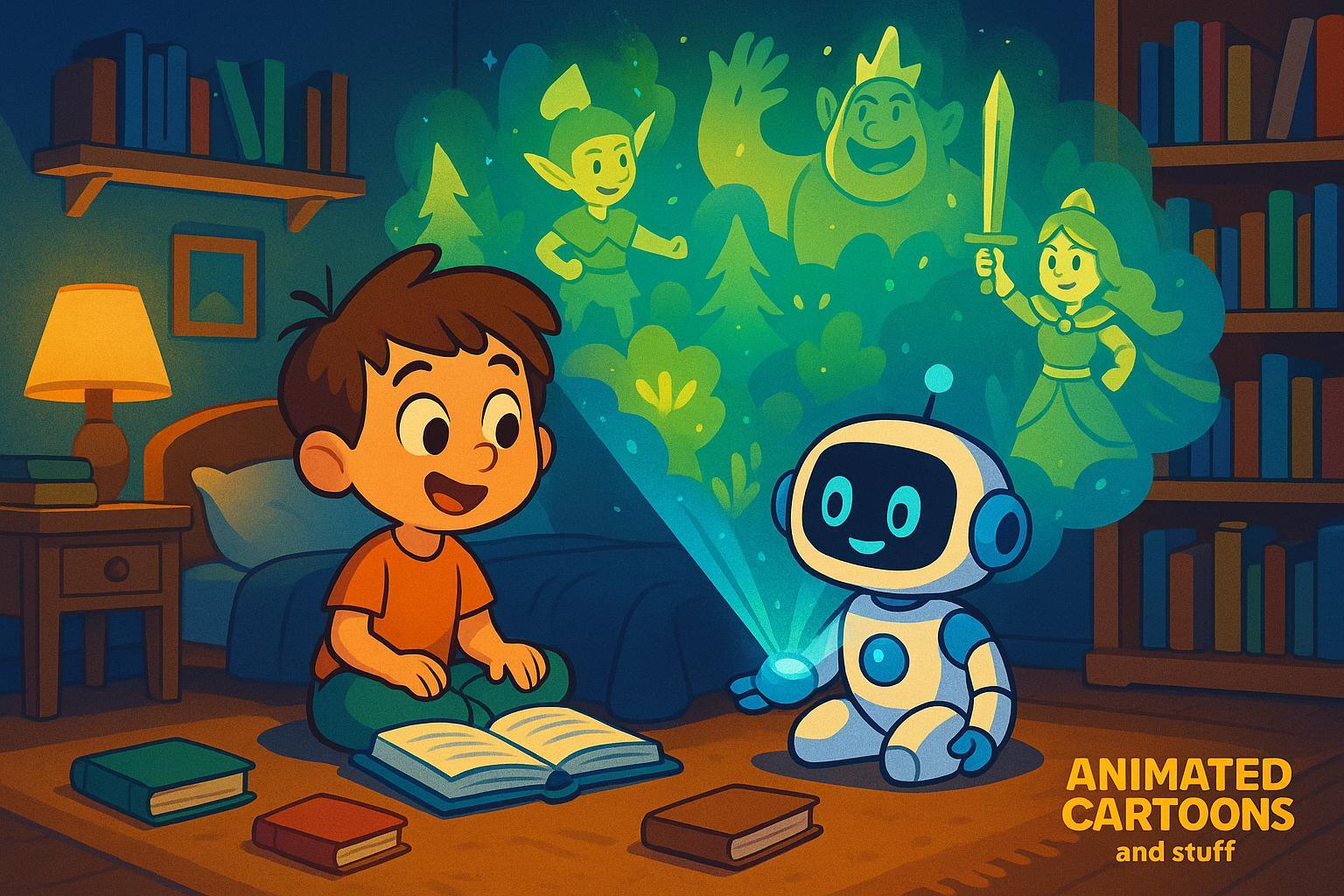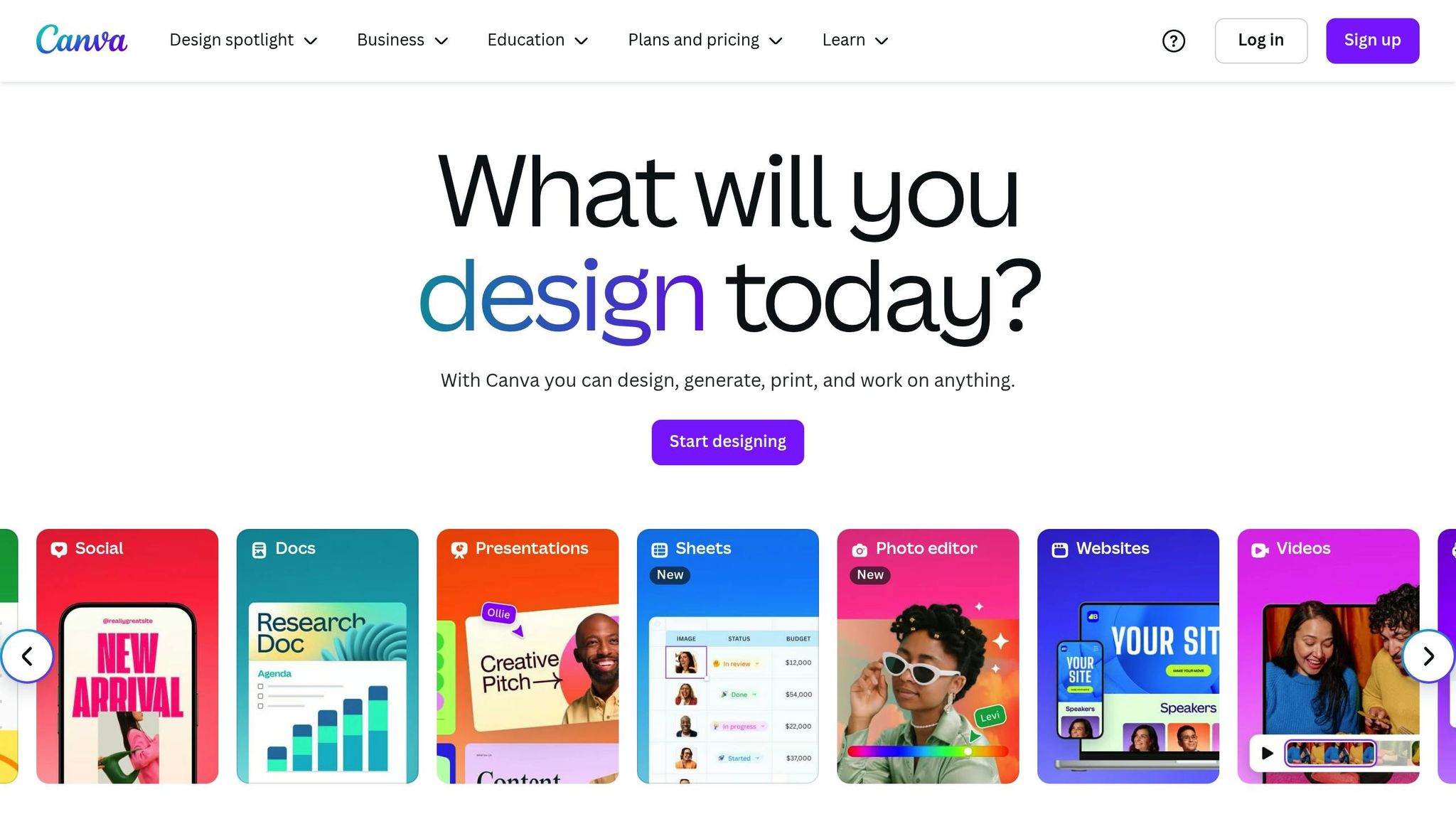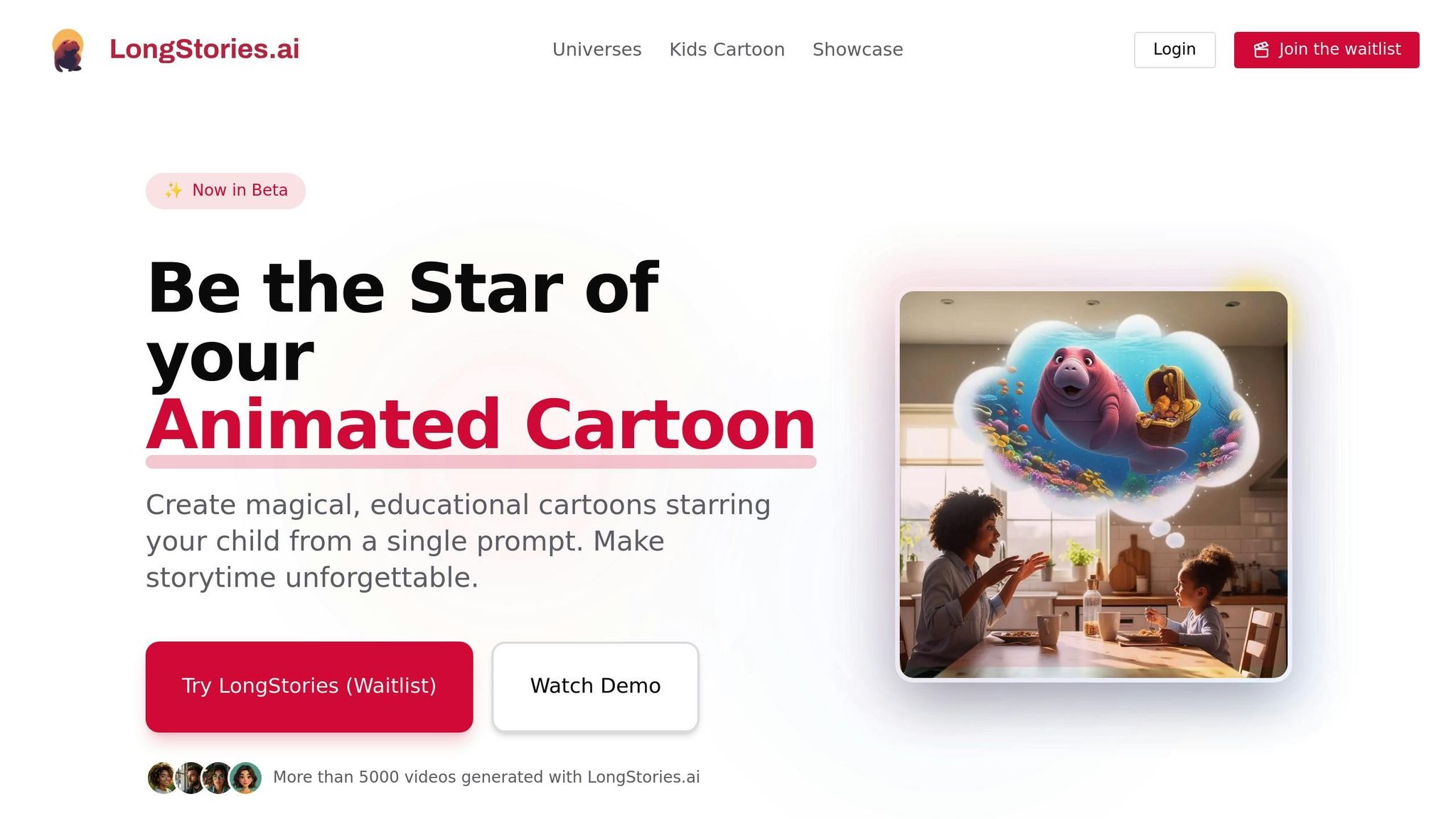
LongStories is constantly evolving as it finds its product-market fit. Features, pricing, and offerings are continuously being refined and updated. The information in this blog post reflects our understanding at the time of writing. Please always check LongStories.ai for the latest information about our products, features, and pricing, or contact us directly for the most current details.
How AI Personalizes Learning Through Stories
AI is transforming education by creating stories tailored to each child, making learning more engaging and effective. Here's how:
- Personalized Adventures: AI crafts stories where kids become the heroes, using their names, interests, and learning styles.
- Interactive Choices: Kids shape the narrative, improving critical thinking and decision-making skills.
- Enhanced Learning: Stories engage multiple senses, boosting memory, empathy, and problem-solving.
- Real Results: Platforms like LongStories.ai have created over 5,000 custom adventures, helping kids learn faster and build confidence.
AI storytelling combines fun and learning, turning lessons into unforgettable adventures.
Create and Illustrate Stories with AI #ai4teachers #aiforteachers #canva

How AI Creates Custom Stories for Each Child
AI-powered storytelling platforms are reshaping the way children experience stories by tailoring narratives to fit each child's unique profile. Instead of offering one-size-fits-all tales, these systems analyze key details like a child's name, age, reading level, language preferences, and interests to craft personalized books and videos. By weaving in elements that reflect the child's world and background, these platforms create stories that feel both relatable and engaging. But the personalization doesn’t stop there - interactive choices and dynamic narratives take this experience to the next level.
Interestingly, research highlights that some platforms using these techniques have reached families in over 194 countries, offering stories in multiple languages. Parents and educators can provide specific details to make the stories even more relevant, which helps create a more inclusive and captivating reading experience. This approach is especially impactful when considering that over 700 million children globally lack basic reading skills.
Stories That Change Based on Child Choices
Personalized storytelling goes beyond static content - AI enables stories to evolve in real time based on a child's input. By leveraging advanced language processing, these platforms let kids interact with their stories through voice commands or text inputs, actively shaping the narrative as they make decisions or tackle challenges.
Using predictive analytics, these systems can anticipate how a child might react to different story elements and adapt the plot accordingly to keep the experience engaging and responsive. Features like customizable characters, settings, and plotlines ensure that the story grows and changes with the child’s choices, making each adventure feel unique.
Making the Child the Main Character
One of the most powerful aspects of personalized storytelling is placing the child at the heart of the narrative. When a child becomes the hero of their own story, it transforms reading time into an immersive and magical experience. This approach taps into their natural curiosity and desire to feel capable as they navigate challenges and adventures.
Research underscores the benefits of this method. Personalized learning materials have been shown to improve educational outcomes. Organizational psychologist Peg Neuhauser discovered that stories help people retain information more accurately and for longer periods compared to learning through raw data. Some platforms even take this idea further by creating custom adventures designed to provide comfort and courage during difficult moments.
When children see themselves as the heroes of their stories, it boosts their confidence and encourages greater participation in the classroom. This method not only fuels their imagination but also inspires them to view themselves as capable learners and creative thinkers, fostering a lifelong love of storytelling and self-expression.
How AI Stories Help Children Think and Learn
Interactive storytelling takes reading to a new level, turning it into an active learning experience that sharpens both cognitive and emotional skills.
Building Critical Thinking Through Story Choices
AI-powered storytelling invites kids to take an active role in shaping the narrative. Unlike traditional books with fixed plots, these stories adapt based on the choices children make. This approach not only keeps them engaged but also enhances their ability to solve problems and think critically in real-world scenarios. By weighing different perspectives and considering possible outcomes, kids naturally develop stronger decision-making skills.
Michelle Connolly, Founder of Educational Voice, puts it this way:
"Interactive storytelling bridges the gap between entertainment and education, creating what I call 'stealth learning' – children are so engaged in the narrative experience that they don't realise how much they're actually learning."
Parents and teachers can take this a step further by encouraging kids to think deeply about the story. Asking open-ended questions like, "Why do you think the character made that choice?" or "What would you have done differently?" adds depth to the learning experience. These discussions, paired with the interactive nature of the stories, create a richer, more immersive way for children to learn.
Better Memory Through Multiple Senses
Stories that combine visuals, sound, and interactive elements tap into multiple senses, which helps kids remember information more effectively. This multisensory approach doesn’t just make stories more engaging - it strengthens memory retention and reinforces learning through hands-on interaction. Research has shown that such storytelling can improve vocabulary and boost creative problem-solving skills.
By engaging with stories in this way, children not only remember the content better but also develop foundational skills like empathy and ethical reasoning, which are key for their growth.
Teaching Empathy and Right from Wrong
Interactive stories go beyond cognitive skills - they also help kids grow emotionally. AI-driven narratives often include scenarios that challenge children to make moral decisions. By stepping into the shoes of different characters, kids experience a variety of emotions and learn to understand perspectives other than their own.
Research from the University of Cambridge highlights how empathy-based storytelling can encourage constructive conflict resolution. Studies even show that children who engage in narrative-driven play are 70% more likely to develop higher levels of empathy and social understanding. Early empathy has also been linked to stronger reading and writing skills.
Parents and educators can amplify these benefits by sparking conversations around the story. Questions like, "How do you think the character felt?" or "What would you have done in their place?" help children reflect on their emotions and practice managing them. This kind of engagement not only builds emotional intelligence but also teaches kids the importance of understanding right from wrong.
sbb-itb-94859ad
Case Study: LongStories.ai and Its Impact on Personalized Learning

This case study delves into how LongStories.ai brings the concept of AI-powered interactive storytelling to life. By putting children at the center of their educational experiences, the platform showcases how AI can transform personalized learning into a reality.
How LongStories.ai Works
LongStories.ai turns a simple text prompt into an engaging, animated educational adventure in less than a minute. The platform’s AI generates a personalized script, custom illustrations, character voices, and precise timing, all compiled into a shareable HD video.
What’s remarkable is how it eliminates the traditional hurdles of custom animation - costs running into thousands of dollars and weeks of production time. With LongStories.ai, families and classrooms can create content without needing any video editing skills - just an idea that’s brought to life in a matter of moments.
The real magic lies in how the AI tailors each story. It examines the child’s learning style, interests, and academic background to craft narratives that feel uniquely personal. Research supports this approach, showing that AI can adapt to individual educational needs, making learning more relatable and effective. By placing children as the protagonists of their own stories, the platform ensures that learning becomes an immersive, personalized journey.
Key Features of LongStories.ai
The platform doesn’t just streamline the creation process; it redefines how children engage with educational content. Traditional methods often treat kids as passive viewers, but LongStories.ai flips the script, turning them into the heroes of their own adventures.
One standout feature is its cast of specialized AI characters, known as "Tellers." Each Teller focuses on a specific subject area:
- Manny the Manatee: Guides children through science topics.
- Carter the Job Reporter: Introduces career exploration.
- Professor Time: Brings history to life.
These characters ensure that content is both accurate and age-appropriate, creating focused learning experiences. By combining child-centric storytelling with these specialized guides, LongStories.ai promotes critical thinking and deep engagement. As Ofir Kerker explains:
"Instead of a one-size-fits-all approach, our platform empowers students to become the authors of their own learning journeys. By creating stories based on their interests, proficiency levels, and imagination, students engage with educational content in a way that feels personal, meaningful, and fun."
The platform also prioritizes safety and quality. Its AI is trained to produce positive, educational content, addressing concerns about screen time. Instead of passively watching, children actively engage in learning - whether exploring science, revisiting historical events, or uncovering life lessons.
Measured Results: Data and User Feedback
Since its launch, LongStories.ai has created thousands of video adventures, offering valuable insights into how personalized storytelling impacts learning. This volume highlights not only the platform’s technical strength but also its appeal to educators and families looking for tailored educational tools.
Feedback from educators has been instrumental in shaping the platform. Co-founder Nadav Yaron shares:
"We realized early on that teachers are incredibly enthusiastic about giving feedback, and they gave us plenty! We listened closely and used their insights to design the first features of our education platform."
This collaborative approach ensures the platform meets real classroom needs. Teachers can set specific learning objectives while students take creative paths to achieve them. This aligns with the concept of student-driven learning, where educators set the goals, but children chart their own course.
Currently in its beta phase, LongStories.ai invites families and educators to experience its personalized storytelling firsthand. The waitlist system allows early users to provide feedback, helping refine the platform to address genuine educational needs. This community-driven development ensures that the technology remains practical and impactful, avoiding flashy features that lack real-world value.
The platform’s influence extends beyond engagement metrics. By incorporating diverse stories and upholding ethical content standards, it supports inclusivity and fosters understanding among students from various backgrounds. This holistic approach not only enhances academic learning but also nurtures the social and emotional growth essential for lifelong success.
Safety and Practical Issues for AI in Storytelling
AI-powered storytelling offers exciting possibilities for personalized learning, but it also raises important safety concerns for parents and educators. To create experiences that are safe, inclusive, and respectful of privacy, platforms must focus on filtering content carefully, ensuring fairness, and protecting sensitive data. These measures are essential to keep children’s experiences secure, age-appropriate, and equitable.
Ensuring Content Matches the Child's Age
AI storytelling platforms need to ensure that the content they provide aligns with a child’s developmental stage. This is often achieved through layered protections and adaptable systems. For example, younger children might engage with simpler language and themes, while older kids can explore more complex narratives.
To maintain safety, filtering systems work in the background to automatically block inappropriate material, such as violent or adult content. Many platforms also comply with certifications like COPPA, which safeguards children under 13. Experts stress the importance of open conversations between parents and children about AI tools, helping kids understand that not everything they encounter online is real and that digital content can be manipulated.
Crafting Fair and Inclusive Stories
Fairness in AI-driven storytelling means creating narratives that represent a wide range of cultures and viewpoints while steering clear of harmful stereotypes. Achieving this requires training AI systems with diverse datasets that reflect the richness of human experiences. Studies have shown that mainstream stories often underrepresent characters with darker skin tones.
To tackle these challenges, developers use balanced datasets, implement bias detection mechanisms, and involve diverse teams in the design process. Regular testing with datasets that mirror real-world diversity helps identify and resolve potential issues. As Ken Shelton and Dee Lanier aptly note:
"The bias that exists 'out there' is the same bias that exists in ourselves."
By addressing these biases, AI storytelling platforms can create fairer and more representative narratives.
Protecting Children's Data and Privacy
Beyond content and inclusivity, safeguarding children’s personal data is critical. Many platforms process sensitive information responsibly, ensuring it is promptly deleted to protect user privacy. They also commit to not using children’s data to train AI models, keeping personal details separate from systems designed to enhance content personalization.
Parental consent plays a vital role in data protection. Platforms must clearly explain what data is collected, how it’s used, and who has access to it. Optional uses of personal data - like for AI training - should be turned off by default and only enabled with explicit parental approval. Additional protective measures include encryption, restricted access, and regular privacy impact assessments.
Legal frameworks further bolster these efforts. For example, the California Age-Appropriate Design Code Act requires that online services likely to be used by children under 18 prioritize their safety and privacy. As California Attorney General Rob Bonta emphasizes:
"We should be able to protect our children as they use the internet. Big businesses have no right to our children's data: childhood experiences are not for sale."
Privacy laws vary worldwide, as shown in this table:
| Age of Consent by Country | Countries |
|---|---|
| 16 years | Ireland, Netherlands, Croatia, Poland, Romania |
| 15 years | France, Greece |
| 14 years | Spain, Italy, Austria, Bulgaria, Cyprus, Lithuania |
| 13 years | Portugal, Belgium, Denmark, Norway, Sweden, Finland |
Many platforms adopt best practices by aligning with frameworks like the NIST Cybersecurity Framework 2.0 to ensure proactive risk management and data security. The need for strong safety measures is underscored by alarming data from the Internet Watch Foundation, which reported 245 cases of AI-generated child sexual abuse imagery in 2024 - a staggering 380% increase from the previous year. These statistics highlight why robust protections are absolutely essential for any platform catering to children. By prioritizing safety and privacy, AI storytelling platforms can create secure and enriching learning environments.
Conclusion: How AI Stories Change Learning
Research has shown that personalized narratives can significantly enhance critical thinking and empathy. With AI-driven storytelling, a new chapter in education is unfolding - one where children actively engage with content by becoming the heroes of their own learning journeys.
Stories have a unique staying power. In fact, studies suggest that they're remembered up to 22 times longer than isolated facts. Compare that to traditional lectures, which retain only 5% of information, and it's clear why personalized AI stories are gaining traction. Platforms like LongStories.ai are leading this shift, offering a fresh way to captivate young learners.
LongStories.ai has already created over 5,000 video adventures, turning simple prompts into personalized educational experiences. In less than a minute, kids can embark on journeys tailored specifically to them - an approach that blends creativity with accessibility.
But this is more than just entertainment. Personalized books have been shown to help children learn new words at faster rates compared to standard books. AI tools take it a step further, adjusting story complexity in real time based on a child's age, reading level, and even emotional engagement. This kind of adaptability ensures that each story resonates deeply with its audience, making learning both effective and enjoyable.
The need for such innovation is clear. Half of all students report feeling disengaged from their schoolwork most of the time. Personalized storytelling offers an antidote, turning lessons into adventures. As Joe Lazauskas and Shane Snow highlight in The Storytelling Edge:
"Good stories surprise us. They make us think and feel. They stick in our minds and help us remember ideas and concepts in a way that a PowerPoint crammed with bar graphs never can."
FAQs
How does AI make sure personalized stories are safe and suitable for kids?
AI leverages advanced algorithms to craft personalized stories that are carefully designed to be safe and suitable for children. These systems adhere to strict content guidelines, customizing themes and language to align with the developmental stages of different age groups.
For added peace of mind, many platforms offer parental controls. These tools let caregivers monitor and manage the content their children access. This ensures a secure and enjoyable space where kids can explore stories tailored to them, all while nurturing their creativity and encouraging critical thinking.
How does AI storytelling help children build empathy and make better decisions?
AI-powered storytelling introduces children to narratives that allow them to engage with a variety of characters and scenarios, helping them build a deeper sense of empathy. By stepping into the shoes of different characters and experiencing their emotions and perspectives, kids gain a better understanding of the feelings and viewpoints of others.
These platforms also nurture decision-making skills by weaving choices and consequences into the storylines. As children make decisions within these stories, they sharpen their critical thinking and see firsthand how their actions can influence outcomes. The ability to personalize these stories makes them even more engaging, turning learning into an experience that's both impactful and enjoyable.
How can parents and teachers make AI-generated stories more meaningful and engaging for kids?
Parents and teachers can bring AI-generated stories to life by customizing them to match a child’s individual interests, experiences, and learning objectives. By suggesting particular themes, specific vocabulary, or meaningful life lessons, they can guide the AI to craft stories that resonate on a personal level.
They can also play an active role by reviewing the stories and offering feedback to refine the AI’s results, ensuring the content is suitable for the child’s age and developmental stage. This hands-on approach not only makes the stories more engaging but also encourages creativity and nurtures critical thinking skills.
